Introduction of Beam Bridge
Important Point
Bridges are one of the most important parts of the Infrastructure of the country which plays a great role in the transportation of raw materials from one end to another end.
There are many types of bridges which are constructed for the movement of traffic. In which article, you will get to know about beam Bridge and the types of beam Bridge.
What Is Beam Bridge?
A beam bridge is one of the most common and widely used basic types of Bridge, also known as the Girder Bridge. This article provides a comprehensive beam bridge definition and insights into its various aspects.
The main aim of constructing a bridge is to provide passage of traffic from one end to another end. Beam Bridges are the simplest structural forms for the spans of the bridge which is supported by the abutments or piers at each end.
It is basically a horizontal slab for beam which is supported at each end. Beam Bridge is a common type of bridge which is held by the supports at the ends.
In this type of bridge, no moments will get transferred throughout the support so that it is known as simply supported. Beam bridges can carry pedestrians, trucks, light rail and heavy rail etc.
It is very necessary to calculate all the bending moments in a beam to establish a safe design for the construction of beam bridges.
Also, Read: What Is Zero Force Member for Truss | How to Identification of Zero Force Members in Truss
Material Used in the Construction of Beam Bridge.
Nowadays, with advancements in technology, various materials are used for the construction of bridges, especially in the context of a beam and column bridge.
The materials which are used in the construction of beam bridges are as follows.
- Timber
- Iron
- Steel
- Reinforced cement concrete
- Prestressed concrete.
Prestressed concrete material is best for the construction of beam Bridge because it can endure high compressive stresses.
Also, Read: What Is Falsework | Types of Falsework |Causes of Falsework Failures
Types of Beam Bridges
The Beam Bridge is categorised into mainly four types which are listed below
#1 Based on the Geometry
- Straight beam Bridge
- Curved beam Bridge
- Tapered beam Bridge
#2 Based on the Shape of the Cross-Section of the Bridge
- I-Beam Bridge
- T-Beam Bridge
- C-Beam Bridge
#3 Based on the Equilibrium Conditions of the Bridge
- Statically determinate beam Bridge
- Statically indeterminate beam Bridge
#4 Based on the Type of Support
- Simply supported beam Bridge
- Cantilever beam Bridge
- Overhanging beam Bridge
- Continuous beam Bridge
- Fixed beam Bridge
Also, Read: What Is Cross Drainage Work | Types of Cross Drainage Works | Syphon Aqueduct
Description of the beam Bridges in detail is given below
#1 Beam Bridges Based on the Geometry
#a Straight Beam Bridge
Street beams at the horizontal component which are used to support vertical loads.
#b Curved Beam Bridge
In the curved beam, there are some assumptions which are taken like the cross-section has access of symmetry in a plane along with the length of the beam. The modulus of elasticity e remains the same in tension and compression.
#c Tapered Beam Bridge
The stress analysis of the tapered beam is different as compared to the uniform beam section. The tapered beam is subjected to the tip bending load which is analysed to predict the distributions of stresses.
#2 Classification of Beam Bridge Based on the Shape
#a I Beam Bridge
I-beam beams are more economical and easy to fabricate. I-Beam has a high moment of inertia which will help to resist the moment.
#b T Beam Bridge
This type of beam is made monolithically with the reinforced cement concrete.
#c C Beam Bridge
C-beam is also known as channel Beam. It has high load carrying capacity and can be made from concrete, steel and heavy wood.
Also, Read: IS 1200 Important Point Part-2
#3 Classification Based on the Equilibrium Conditions
#a Statically Determinate Beam Bridge
In regards to beams, if the reaction forces can be calculated using equilibrium equations alone, they are statically determinate.
On the other hand, if the reaction force can’t be determined using equilibrium equations only, other methods have to be used, and the structure is said to be statically indeterminate.
#b Statically Indeterminate Beam Bridge
The structures of the bridges which cannot be analysed using statics equations only, they may require material properties.
Also, Read: Difference Between Whole Circle Bearing and Quadrantal Bearing | What Is WCB | What Is QB
#4 Classification Based on the Type of Support
#a Simply Supported Beam Bridge
supports, it is called a simply supported beam bridge. If two or more beams are joined rigidly together over supports, the bridge becomes continuous.
#b Cantilever Beam Bridge
Cantilever beam Bridge is a type of beam Bridge which is supported at one end only and free at another end.
#c Overhanging Beam Bridge
Overhanging beam has at least two supports at one end and other is at another end.
#d Continuous Beam Bridge
Continuous beam Bridge is a type of bridge which has more than two supports.
#e Fixed Beam Bridge
Fixed Beam Bridge is a type of bridge which is rigidly fixed at both ends.
How Does a Beam Bridge Works?
The Beam bridge is simply a horizontal slab which rests on the supports at the ends. The support carries the load coming on the bridge due to heavy traffic and transfers it to the foundation.
In case of the beam Bridge, the whole weight of the beam pushes straight down on the piers or the supports. The beam should be strong such that it does not bend under its self-weight it and the additional weight by the movement of heavy traffic.
When the load coming from the heavy traffic tends the Beam to bend. In this case, the upper edge of the beam is in compression and the bottom portion of the beam is in tension.
Beam bridge can endure both compressive stresses as well as tensile stresses. Beam bridges weight and strength depend upon the distance off the bridge.
The strength of the beam Bridge is influenced by the distance between two piers.
The bridge mainly consists of three elements which are
- Substructure
- Superstructure
- Deck of the Bridge
#1. Substructure
The substructure consists of the foundation which transfers the load of the weight of the bridge to the underground Strata. It also consists of columns or piers and abutments
#2. Superstructure
The superstructure of the bridge is the horizontal slab which spans between the two supports.
#3. Deck of the Bridge
The function of the Deck of the bridge is to carry the movement of traffic from one end to another end.
Advantages of Beam Bridges
There are many advantages of a beam and column bridge as well as general beam bridge advantages which are as follows
- Beam bridges are very simple and easy to construct.
- Beam bridges are mostly used in the rural and urban areas.
- In the construction of beam bridges, the Beam rests simply on the supports.
- Beam bridges are economical as compared to other types of bridges.
- Beam bridges can easily sustain the effects of thermal expansion and movements of the ground.
Also, Read: What Does Parapet Mean | Types of Parapet Wall | Uses of Parapet Wall
Disadvantages of Beam Bridges
- The disadvantages of a beam and column bridge as well as general beam bridge disadvantages include the fact that the construction of Beam Bridge is expensive for longer spans.
- Beam bridges undergo a significant amount of wear and tear.
- Beam Bridges required more Maintenance as compared to the other types of bridges.
- The Beam Bridge is only suitable for the short distance.
- Beam bridges are not aesthetical good as compared to other bridges.
- Beam bridges may start to sag due to excessive loads.
Beam Bridges Examples
Some Famous beam Bridge are listed below
- Vikram Shila Bridge
- Lake Pontchartrain Causeway, Louisiana
- Manchac Swamp Bridge
Vikram Shila Bridge
Lake Pontchartrain Causeway, Louisiana
Manchac Swamp Bridge
Beam Bridge Pros and Cons
Beam bridge advantages and disadvantages are crucial to understand. Here are the pros and cons of beam bridges.
- Beam Bridges Are an Affordable Building Option.
- They Can Be Built Very Quickly.
- There Are Multiple Design Options Available for Beam Bridges.
- Multiple Material Options Are Available to Use for Beam Bridges.
- They Can Be Placed Almost Anywhere.
Cons of Beam Bridge
- There Are Span Limitations to Beam Bridges.
- Beam Bridges Can Be Susceptible to Sagging.
- A Beam Bridge Provides Only Basic Supports.
- They Weaken as They Get Older.
- A Beam Bridge Has Limited Placement Options.
- The Deck Span Width of a Beam Bridge Is Naturally Limited by Its Design.
- The Cost Advantages of a Beam Bridge Can Disappear.
- It Is a Design Option That Offers Little Flexibility.
Advantages of Beam Bridge:
- Beam bridges are an affordable building option.
- They can be built very quickly.
- There are multiple design options available for beam bridges.
- Multiple material options are available to use for beam bridges.
- They can be placed almost anywhere.
- There are span limitations to beam bridges.
Beam Bridge Strengths and Weaknesses
- Beam bridges may be costly even for rather short spans, since expensive steel is required as a construction material.
- When long spans are required to be covered, beam bridges are extremely expensive due to the piers required for holding the long beams.
Famous Beam Bridge
Situated in China, the Donghai Bridge is one of the longest sea bridges in the world measuring 32.5 km (20.2 miles). The beam bridge connects mainland Shanghai to offshore Yangshan with a cable stayed section in the middle allowing the passage of large ships. The bridge was completed back in December 2005 and is said to have cost $1.64 billion.
Beam Bridge Facts
A beam bridge is a strong, horizontal structure that rests on two end supports, and carries traffic by acting as a beam. Beam bridges are often used for heavy cars and trains to pass, and some are also built for people to walk on. Beam bridges used to be made from wood and were called log bridges.
Advantages and Disadvantages of Beam Bridges
- Beam bridges may be costly even for rather short spans, since expensive steel is required as a construction material.
- When long spans are required to be covered, beam bridges are extremely expensive due to the piers required for holding the long beams.
Beam Bridge Examples
Lake Pontchartrain Causeway in Louisiana, the world’s longest over-water bridge, is an example of a beam bridge. The causeway’s 24 mile length is made up of 2,243 separate spans on the southbound lane and 1,500 spans on the northbound lane.
How Does a Beam Bridge Work?
In its most basic form, a beam bridge consists of a horizontal beam that is supported at each end by piers. The weight of the beam pushes straight down on the piers. Under load, the beam’s top surface is pushed down or compressed while the bottom edge is stretched or placed under tension.
Beam Bridges
Beam bridges, also known as stringer bridges, are the simplest structural forms for bridge spans supported by an abutment or pier at each end. No moments are transferred throughout the support, hence their structural type is known as simply supported.
Like this post? Share it with your friends!
Suggested Read –
- Beam Type
- What Are Planted Column, Floating Column, Hanging Column, and Stub Column
- Luminous Flux Vs Lumens | What Is Luminous Flux | What Are Lumens | How Bright Is 1000 Lumens
- What Is Mix Design of Concrete | Nominal Mix | Design Mix| Difference Between Nominal Mix and Design Mix
- Meaning | What Is Waterlogging | How to Prevent Waterlogging | Effect of Waterlogging | Causes of Waterlogging
- How to Build a Suspension Bridge | Suspension Bridge Facts | Suspension Bridge-Strength & Weaknesses | Advantages and Disadvantages of a Suspension Bridge
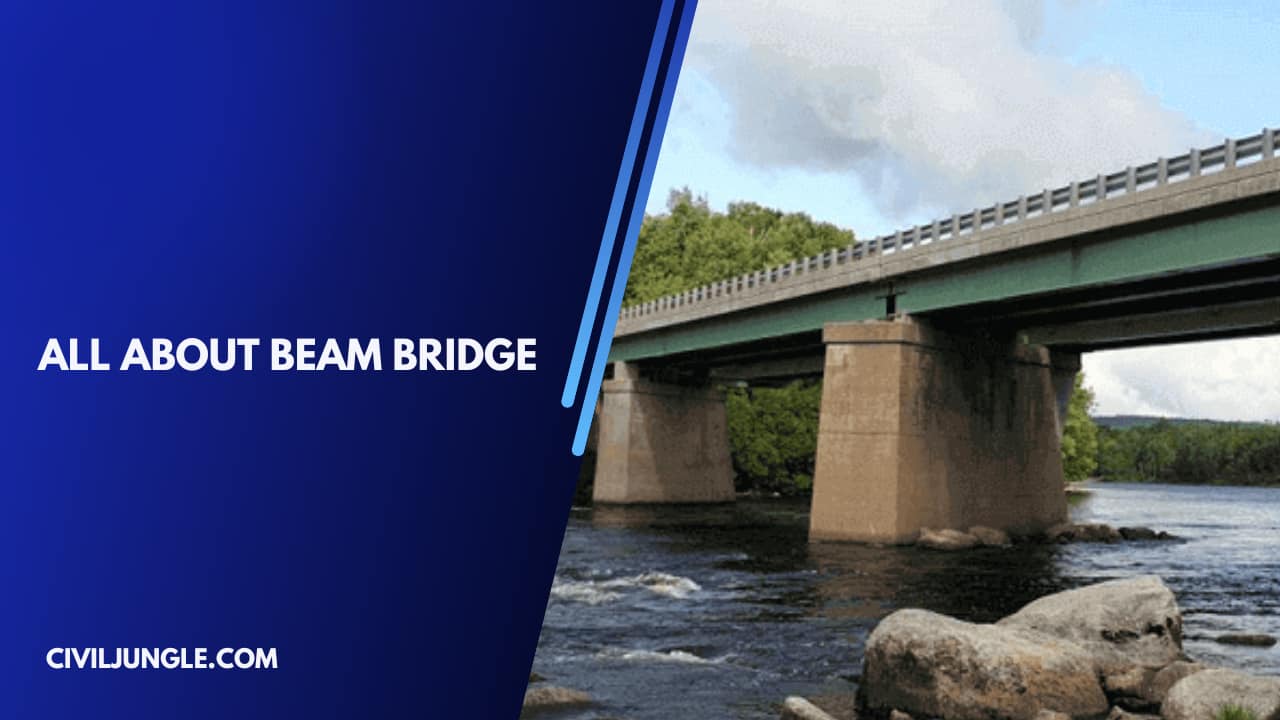

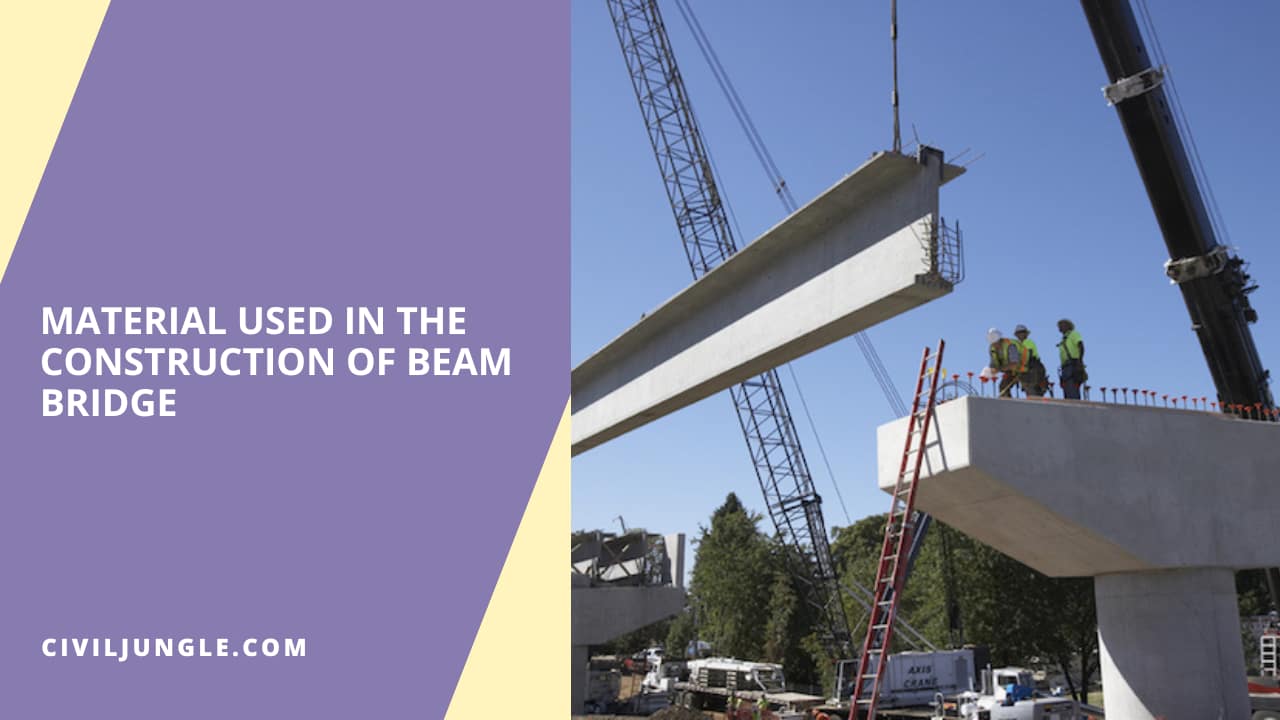
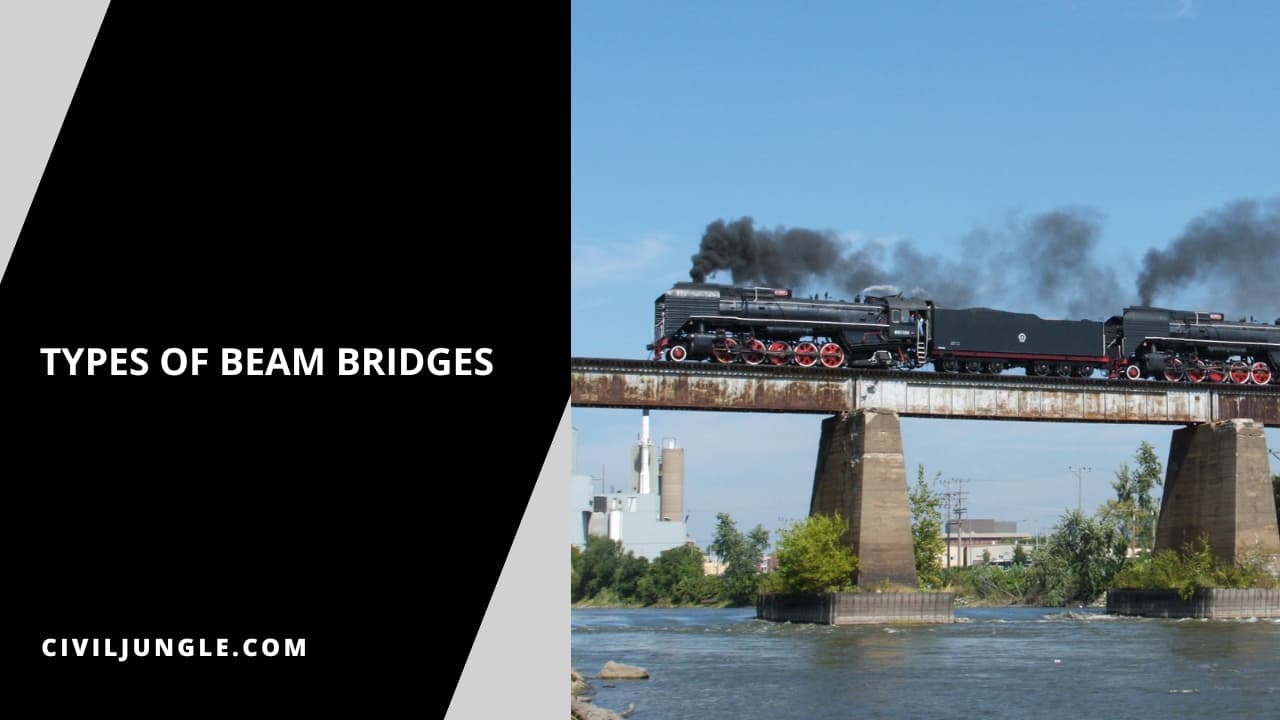
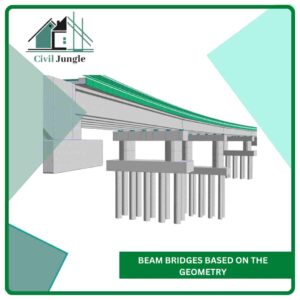

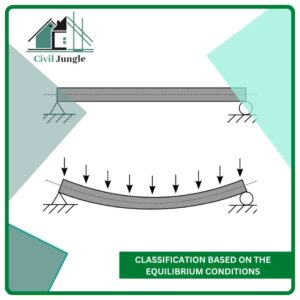

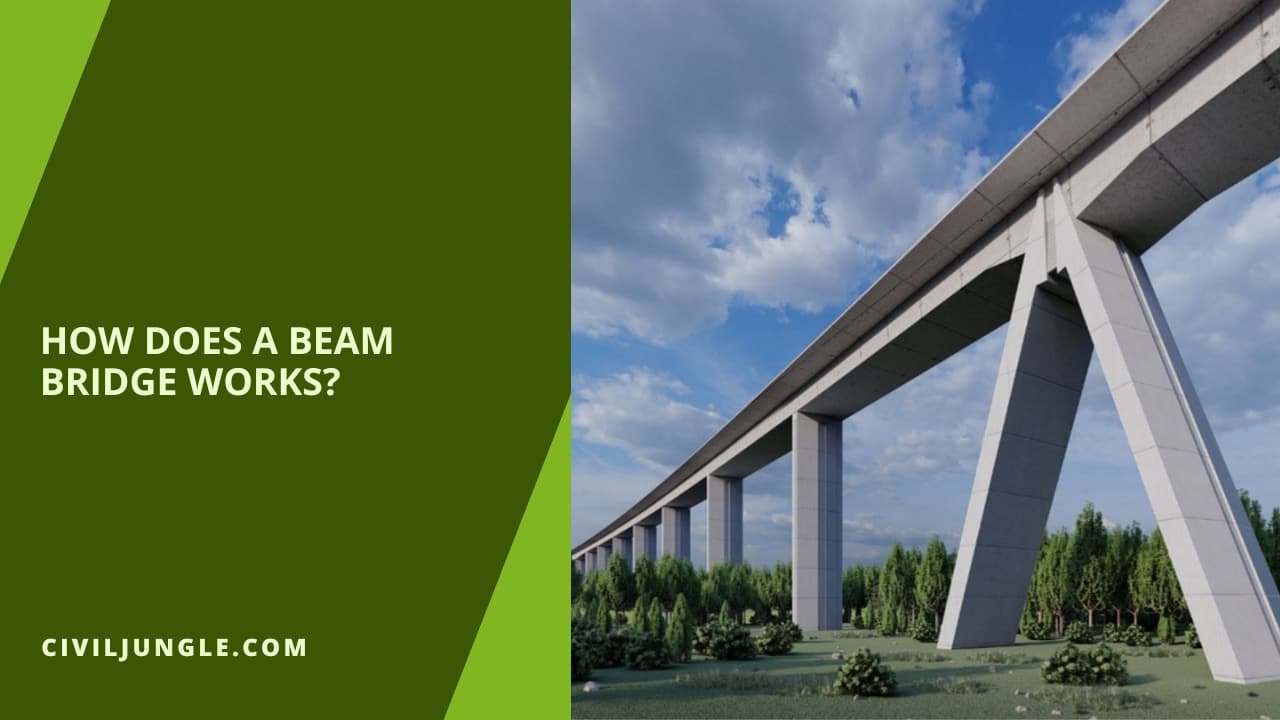

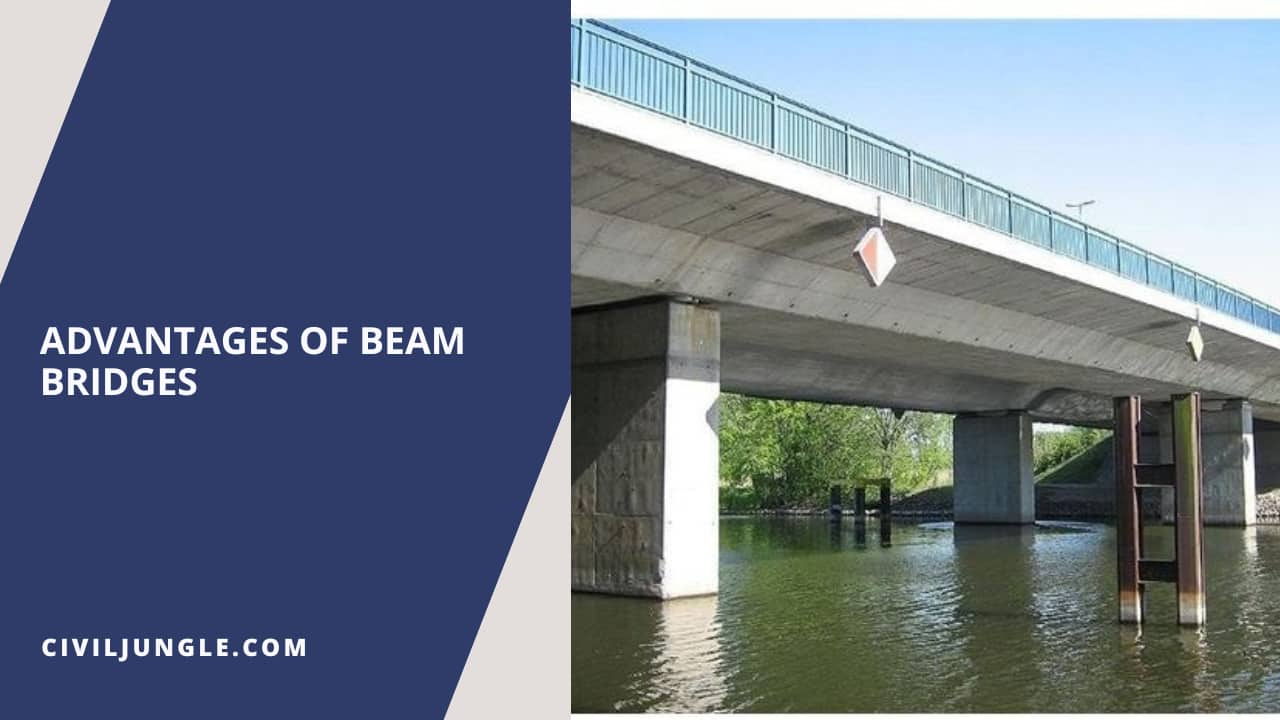

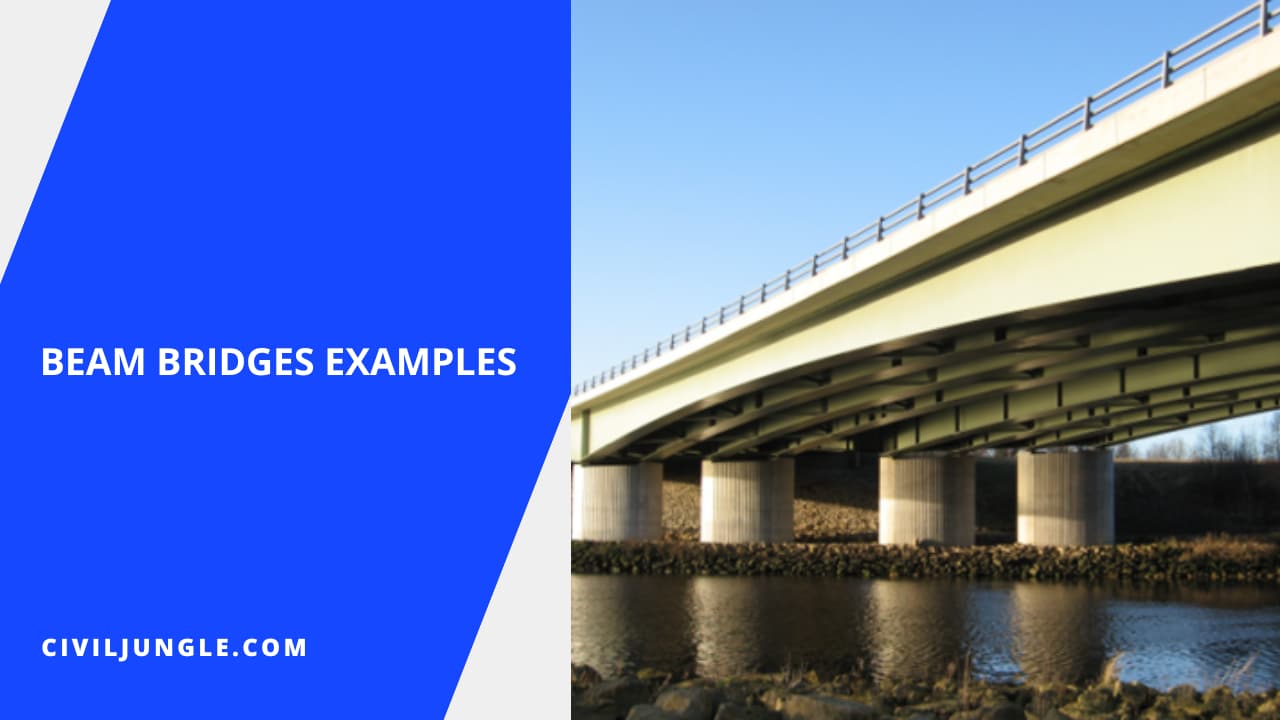




Leave a Reply